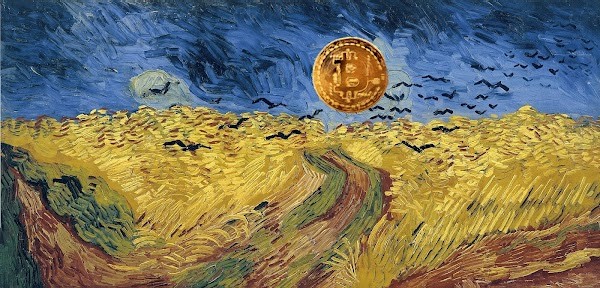What is an NFT?
To understand NFTs it is useful to first have an understanding of what blockchains are.
Blockchains are decentralised databases that function like public, digital ledgers. Individual units of code (like entries in a ledger) are built up sequentially as blocks in a chain. This process is carried out autonomously and cannot be interfered with without leaving some kind of trace. Each block has a unique ‘fingerprint’ tying it to an individual and identifiable user. This means that transactions carried out via blockchain are indisputable, so ownership and provenance of units can be easily verified.
Blockchains were initially used for currency-based transactions, using cryptocurrencies such as Bitcoin. However, this technology has now developed to allow different kinds of transactions with different kinds of digital assets, including NFTs (non-fungible tokens). ‘Token’ is a general word used to describe a unit on the blockchain, and therefore a digital asset that could be represented as a crypto coin or anything else. ‘Non-fungible’ means, in relation to a digital or other kind of asset, that the asset is non-interchangeable, so it cannot be exchanged or swapped for an identical asset of the same kind.
With cryptocurrency, an analogy that helps to illustrate this idea of fungibility is money, fiat currency. For example, a banknote is technically non-fungible in the sense that any one banknote is unique. Even if it appears the same as another banknote to the naked eye, it will have microscopic elements that differentiate it. However, the essential characteristic of money is value. As a result, money is, in practice, fungible, as one banknote can be readily interchanged for another banknote of the same value. The same is true of cryptocurrency.
With NFTs, a better analogy would be assets such as art or real estate. Whilst two pieces of art might have the same value, they are clearly not readily interchangeable. This is because value is not their essential characteristic. They have other important aspects, such as shape, size, colour and function. These kinds of assets are therefore technically, and in practice, non-fungible, as they cannot be interchanged like for like due to their inherently different characteristics. NFTs are the same. They are digital assets that are not just simply representations of value like cryptocurrency, but have other unique features. An obvious example is digital art, but NFTs relate to a vast range of other assets, from music, to a tweet, to a plot of land in a virtual world.
What do you get when you buy an NFT?
If you buy a NFT of a tweet, then you cannot physically hold the tweet, which will remain publically available on Twitter unless deleted. You could print a copy of it and hang it in your house, but anyone else can access it and do the same. This is because NFTs are in fact only a digital representation of ownership. They are therefore more akin to the artist’s signature on a piece of art, than the art itself. Similar to a signature, an NFT is a unique unit of code on the blockchain that is a mark or certification of ownership which cannot be forged or duplicated and therefore is an indisputable record of provenance and possession tied to a digital, or physical, asset.



